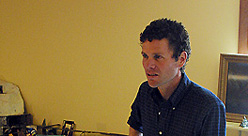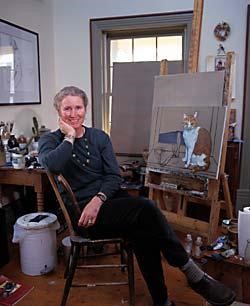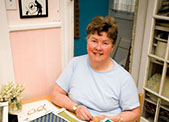In my earlier drawings I focused on line and the wealth of information it could convey. Now I am working through the challenges of color and value in the context of issues I have continued to explore for the past twenty years. The American landscape is cloaked in cultural opacities and cluttered with human debris. I contend that no one with a twentieth-century eye can see through the layers of artificial meaning and histories we have imposed onto this finally impenetrable continent. So, rather than trying for that ever-elusive glimpse of a landscape or history in its purity, I choose to draw the perceptions and impositions between us and a place we cannot know. In my paintings of America, I am far more concerned with representing and questioning cultural and visual expectations than with illustrating a scene. In a sense, my paintings and drawings are anthropological; in them, I often dwell on the values, activities, and events of ancient and contemporary cultures, “tracing” the traces they left behind. I am especially intrigued by the events through time that tie seemingly unrelated people and events together in broad cycles: ancient sea voyages, a people migrating to a refuge in the desert, epic battles, a promised land inhabited by many self-chosen peoples that either prosper or suffer because of their activities on the land. All of my work, in some way or another, is about landscape and how we see ourselves through it and impose our values on it. My paintings are both referential and highly interpretive, depicting panoramic views of specific locations. They deal with our perceptions of time, social and environmental history, and tend to look like maps, but my “maps” are not accurate according to cartographic expectations. These are maps of time, culture, dreams, perceptions, the future, and how we wish to see ourselves and our history. They invite the viewer to become lost in them and then to make conscious and intuitive sense of the perceptual environment. I twist perspective, visually and historically. Because of the juxtaposing of unrelated buildings and events, each scene could be hundreds of years in the past, or in the process of being constructed, or in the future after everything has been torn down, destroyed, or worn away. All things—time, history, memory, and perceptions—are present in these paintings.
Learn more










